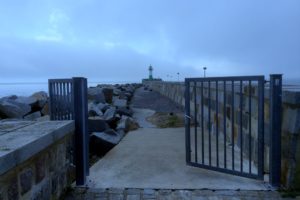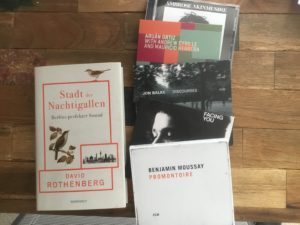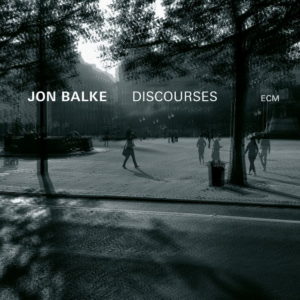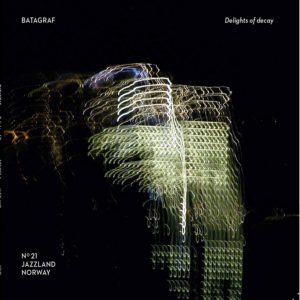
Next Friday, on Feb. 12th, Warp will be released. Carefully handled sonics, field recordings, voices (placed the the middle-, back- and back-back-ground) extend the format of the pure solo album. Highly concentrated, strangely laid back at the same time. Accessible and experimental. Warp is an instruction-free manual for getting yourself lost in. And the world keeps knocking on the door.
How did the different strands of ideas come together to create one of 2016’s most captivating „piano & beyond“-albums? It took some time after having started with initial recordings in Oslo. „I will definitely perform Warp live, the first is in Copenhagen on the day of its release. Another one at the Oslo Jazz festival in August, I hope a lot more also. I control the sound layers myself, using very simple and intuitive tools.“
1
Michael Engelbrecht: What was the basic idea that triggered „Warp“ as a melange of solo piano composition and all the other things and sounds surrounding the Steinway?
Jon Balke: I think the starting point was an abstract idea about making an architecture of sound: walls, curved spaces, light and darkness, actually a question: can this be done? Can we experience sound as a physical environment? And then as I developed my piano playing in paralell. I wanted to try to place the piano inside these imaginary spaces. I am still not sure if I achieved what I wanted, but the process is very intriguing and interesting. And it continues. It has also led to my collaboration with Bjarte Eike and his ensemble, called “the image of melancholy” where I make sonic spaces around live performances of renaissance music.
Michael: What kind of sonic spaces?
Jon: I have used a mixture of actual instrument sounds from his ensemble, filtered and processed, plus layers of composed reverberations that are in accordance with the different pieces they play.
Michael: Has there been an inspiration by other recordings where pianists have surrounded their piano or keyboard music with electronic spheres, natural sounds @ samples?
Jon: Actually I have not been researching by listening to other composers or producers. I had this idea in my head and I have just gone for exploring that. Of course there are many projects with electroaccoustic combinations in music history, so in that sense Warp is in a tradition. But my starting point and inspiration has been an imagination.
Michael: There is one „groove track“ called „Shibboleth“. Sounds Jewish, the word. Is there, in the electronic keyboard figure a short reminder of Joe Zawinul, soundwise. He used some field recordings on his first solo album, and sometimes for „Weather Report“, too …
Jon: I think „Shibboleth“ is actually Hebrew, yes. But it means a slogan or something special that identifies something or someone. Could be special way of dressing up also. I guess it´s sort of iconic for me to dive into this kind of rhythmic textures. I know it is not „modern“, but … I cant help it :-) Hence the title. I was not concious of any Zawinul reference, but of course he is in my blood system so … .
Michael: „Warp“ ist surely a road not taken before in the way it sounds. There is the piano being strictly (most of the time) in the foreground, center stage, the crystalline sound, and then the music is surrounded by a second or third layer – something quiet or „far away“. What was the thrill?
Jon: It is fascinating to shape dimensions in sound. We are acually the first humans who have the possibility to warp and shape sound in this manner, by using technology previously not available, or seriously degraded by unwanted noise and problems. Also, I guess, as the project developed, it started to mean more than just the sound idea in itself. The title refers to the relation between the artist in his or her bubble of esthetic values and choices, as opposed to the external reality of the world of cars and rivers, birds and business. The artist has a warped image of the world and the world has a warped image of the artist. We are living in very turbulent times, and the musician isolated with his piano is starting to seem like an impossibility.
2
Michael: Let’s stay in the impossible for a while. As a listener you tend to try (at first) to identify the sources: the first „noise“ on the record – carefully repeated during the album – sounds like someone playing with the pages of a book, the sound of it. The „listening area“ is extended, an open field beyond the habit of just concentrating on the piano …
Jon: That is in fact what I wanted to achieve, to open up the space or reverb of the piano sound and stretch it out to the world and the sounds in it. You are right about the first sounds, they are recordings of paper shuffling that are warped in the stereo image. I like to think of the listener attaching their own associations to the sounds. It is not important what the sounds really are, I am more interested in the impression on the listener.
Michael: There is this track „This is the movie“. There is a distant electronic sound, you’re playing a soft melodic phrase, a reminder „film music“, more Claude Lelouch than one for Claude Chabrol …
Jon: That title is actually from a text by Sidsel Endresen. Many of the tracks are based on songs or tunes I have made, to text or just instrumental tunes. But I dont play these songs on Warp, I just use them as a reference buried deep down in the mix. This helps me to find structure in the material.
Michael: Did some movies or cinematic „moods“ spring to mind in the long process of giving „Warp“ its last shape?
Jon: Music is always visual for me. I can´t really pinpoint any clear references to movies or images in Warp, but I “see” the spaces and the piano sound as abstract shapes and colors.
Michael: A piano solo album normally takes the time it takes to record it. But on this one, recording the piano pieces had only been one step. You were in that house in the mountains with Audun Kleive adding sounds & atmosheres to the piano tracks. The mixing in Lugano with Manfred Eicher, the final sequencing. A long journey …
Jon: I had an initial stage of recording of soundscapes and voices (with the vocalists) with the clear intention of having all this sound very deep and far around the piano. In the first recording of piano in Rainbow studio, playing on top of the imported soundscapes, I actually had quite a struggle to feel free in this landscape, so I did another pass just playing solo piano and imagining the soundscapes. Then I went home and actually ended up mixing these two approaches. Next we sat down, Audun Kleive and me, and actually shaped (warped) the sounds around the piano sound, using different software tools like Ircams Spat and others, working with spatialisation and imaging.
3
Michael: Interesting, too, the way, you’re working with a fabric of voices. There is choir-like humming, purely instrumental; there is an unusual take on the „pop song“-format with the vocals in the background; there are the quite hidden „airport announcements“. Quite a „theatre of voices“!
Jon: We had actually recorded a lot more singing with Mattis and Wenche, but this felt too imposing in this context, so I kept the more abstract remnants of the recordings. I might release an album of songs later with the actual recordings. But, yes I like to work with voices as colors. If text and melodies become too present, they would shift the focus of this project very fast.
Michael: It would be very interesting to compare the „pure solo version“ against the final work. I think they both would be rewarding listening experiences, but with the adding of all the other elements „Warp“ becomes a different, surely not less „organic beast“…
Jon: I guess that this approaches the psychological phonomenon where you, if you sit near a waterfall, start to hear voices speaking and singing inside the water. If someone has listened to Warp for a while and then heard the piano track alone, they would still hear the soundscapes in the reverberation of the piano, maybe?
Michael: For example, some of the „sounds“ of „Warp“ adopt the role of „leitmotifs“. It’s like returning to a room that has meanwhile changed its colour. That would fit your intention of experiencing sound as a physical environment, wouldn’t it?
Jon: That is a nice way of putting it.
Michael: You are speaking of using the non-musical elements as „remnants“. Shadows of the real world, so to speak. You deliberately treat, for example, these „airport announcements“ making them nearly unrecognizable. The real world is not documented like neo-realism. It’s fragmented, dreamlike, loses its urgency.
Jon: I guess, since you mentioned the movie association earlier, that this might be a way of relating to the sounds of the world and the piano as an instrument in the direction that for instance Tarkovskij relates to the visual media. The world is strange and alien, but also miracolous and beautiful. And it is my role as an artist to go on exploring it, I believe.




